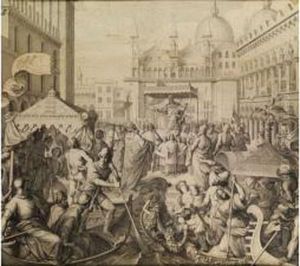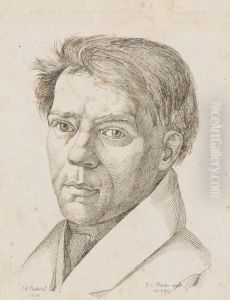Julius Thaeter Paintings
Julius Thaeter was a distinguished German engraver born in 1804, in the city of Berlin. He emerged as a prominent figure in the 19th-century European art scene, particularly noted for his exceptional skills in the engraving medium. Thaeter's career is a testament to the rich tradition of printmaking in Germany, a country with a long history of producing master engravers and printmakers.
Thaeter received his artistic education at the Berlin Academy, a prestigious institution that nurtured many talented artists of the era. Under the guidance of accomplished mentors, he honed his skills and developed a meticulous approach to engraving. His work is characterized by precise detail, depth, and a remarkable ability to convey textures, which made him stand out among his contemporaries.
Throughout his career, Julius Thaeter worked on a variety of subjects, including portraits, landscapes, and historical scenes. His engravings were not only appreciated for their artistic merit but also played a significant role in disseminating the works of other artists. By reproducing paintings in the form of engravings, Thaeter contributed to the wider circulation of art, making it accessible to a broader audience.
Thaeter's influence extended beyond his own creations. He was actively involved in the artistic community, contributing to the development of printmaking techniques and mentoring the next generation of engravers. His legacy is reflected in the continued appreciation of his work and the practices he advanced in the field of engraving.
Julius Thaeter passed away in 1870, leaving behind a body of work that continues to be studied and admired. His contributions to the art of engraving and his role in the 19th-century art world have cemented his place as one of the notable figures in the history of German art.

